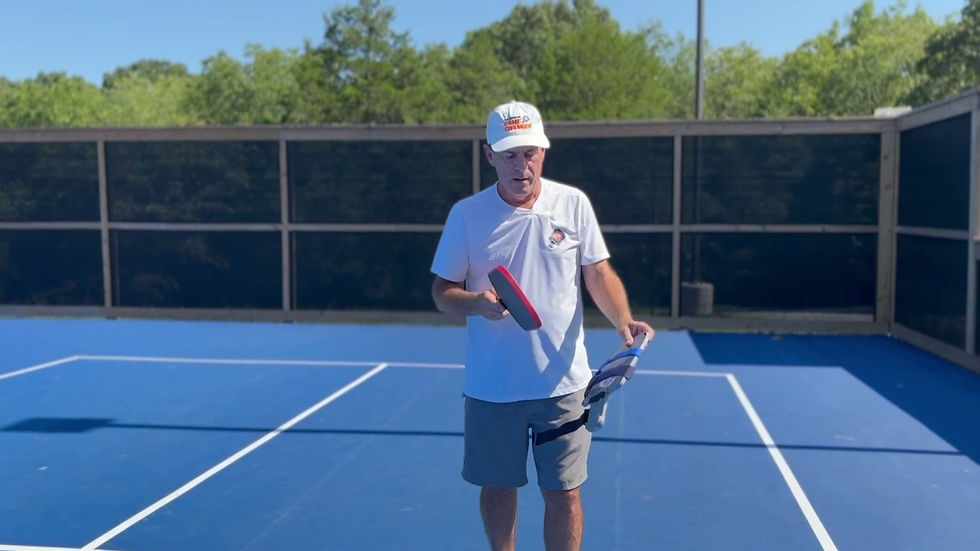Pickleball 101 For Golfers
- Golf Grader

- Apr 20, 2024
- 2 min read
As golfers, you're already familiar with the joys of mastering a sport that requires precision, strategy, and a bit of friendly competition. Enter pickleball, a dynamic paddle sport that's been sweeping the nation, blending elements of tennis, badminton, and ping-pong into a fast-paced and engaging game. Its rise in popularity is phenomenal, attracting players from all walks of life with its fun, sociable, and accessible gameplay.

This quick guide will provide the essential rules and helpful tips you need to step onto the pickleball court with confidence. Whether you're looking for a new way to stay active or just a fun addition to your sporting repertoire, pickleball has something to offer. Here's what you need to know to get started.
Rules:
Court Size: The court is 20x44 feet, divided into two sides by a net that stands 36 inches at the ends and 34 inches in the middle.
Serving: Serve must be underhand from behind the baseline, diagonally to the opponent’s service zone. The serve must clear the non-volley zone, also known as the kitchen.
Double Bounce Rule: Each side must let the ball bounce once before volleys are allowed. This means the receiving team must let the serve bounce, and the serving team must let the return shot bounce before play continues.
Non-Volley Zone (The Kitchen): Players cannot volley the ball (hit it in the air) while standing in the non-volley zone.
Scoring: Games are typically played to 11, 15, or 21 points, and you must win by 2 points. Points can only be scored by the serving team.
Faults: Faults result in the loss of a serve or point. Common faults include hitting the ball out of bounds, not clearing the net, volleying from the kitchen, and foot faults during serving.
Get The Most Forgiving Pickleball Paddles for Beginners
Tips:
Master the Serve: Practice a reliable, consistent serve that lands deep in the opponent’s court.
Control the Kitchen: Control the non-volley zone by mastering dinks (soft shots that land in the kitchen), which can set up offensive opportunities.
Stay Back on the Serve: Remain behind the baseline until after your serve or return of serve has bounced.
Communicate with Your Partner: In doubles, communication is key. Call balls that are yours and use clear signals to avoid confusion.
Use a Variety of Shots: Include a mix of dinks, drives, lobs, and volleys to keep your opponents off balance.
Positioning: Stay centered between the sidelines to cover the court effectively and move forward to the kitchen line quickly when the opportunity arises.
Footwork and Fitness: Good footwork and being in shape are crucial as they allow you to move efficiently around the court.
Watch the Ball: Keep your eye on the ball at all times, and anticipate your opponent’s shots.
Practice Patience: Don’t rush points; build them strategically. Often, the team that makes the least amount of errors wins.
Enjoy the Game: Remember, the main goal is to have fun and enjoy the game while improving your skills.


































Comments